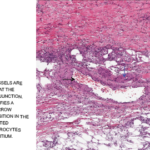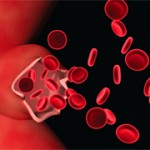It eventually became recognized that the term polyarteritis nodosa actually included a wide group of clinically distinct syndromes. “In the 1920s, microscopic polyangiitis was first described, and that could be set apart from the Kussmaul case because it involved very small blood vessels and was associated with lung hemorrhage and glomerular nephritis,” Dr. Matteson explains.
Other examples include the description of a vasculitis associated with asthma and small vessel disease in the teens and ’20s—eosinophilic granulomatosis with polyangiitis (EGPA, formerly Churg-Strauss syndrome). The 1930s saw identification of another form of vasculitis: giant cell arteritis, which was also clearly different in the organs it involved compared with Kussmaul’s case.
Other types of vasculitides continued to be identified.
Current Vasculitis Nomenclature
Over the years, classification of vascular diseases evolved. The first coherent vasculitis scheme was compiled in 1952 by the pathologist Pearl Zeek, which then served as a benchmark for later systems.6 “What we use now is the 2012 Chapel Hill nomenclature,” says Dr. Matteson. “It is actually going to undergo some further modification in the next year or so because we have continued to make progress in our understanding of these diseases.”7
Defining these different subsets is helpful both for establishing prognosis and developing more specific effective therapeutic choices.
As defined by current nomenclature, only a very small subset of vasculitides is now categorized as polyarteritis nodosa. A diagnosis of polyarteritis nodosa is now applied to multisystemic necrotizing arteritis that does not otherwise fit into a currently recognized vasculitic syndrome.2,8
“We still see polyarteritis nodosa, but many of the other forms of vasculitis are much more common,” notes Dr. Matteson. “One of the thoughts is that that portion of polyarteritis that might be linked to hepatitis B may be declining. That may be a contributor to why that disease is a lot less common than some of other vasculitides.”
There are still many important questions remaining around vasculitides in general. “I think the most important questions around vasculitis are around pathogenesis: how they get started, what triggers them, and what conditions in the body and the immune system favor their expression.”
Dr. Matteson likens the situation to the conditions in a forest. “There are lots of ways to set fire to a forest. But whether your forest catches on fire really depends a lot on the conditions. Is it dry, are the trees close together, is there a lot of brush, is there a lot of wind, or has it not rained for a long time? If all those conditions are there, your forest is going to take off like wildfire.”



